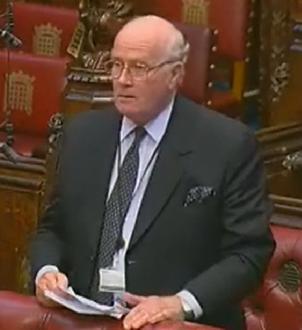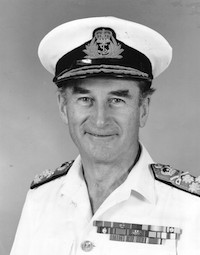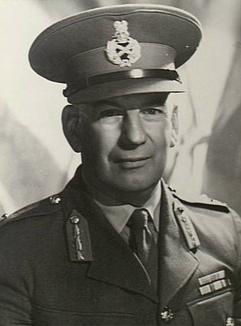Related Research Articles
Lieutenant General John Murray Sanderson, is a retired senior Australian Army officer and vice-regal representative. He served as Force Commander of the United Nations Transitional Authority in Cambodia from 1992 to 1993, Chief of Army from 1995 to 1998, and was the 29th Governor of Western Australia from 2000 to 2005.

Field Marshal Richard Frederick Vincent, Baron Vincent of Coleshill, was a British Army officer. After serving with British Army of the Rhine he served with the Commonwealth Brigade in Malaysia during the Indonesia–Malaysia confrontation. He commanded the 12th Light Air Defence Regiment in Northern Ireland during the Troubles, for which he was appointed a Companion of the Distinguished Service Order, and later commanded the 19th Airportable Brigade. Although he never served as one of the individual service heads, he went on to be Vice-Chief of the Defence Staff in the late 1980s and then Chief of the Defence Staff in the aftermath of the Gulf War. He subsequently became Chair of the Military Committee of NATO in the mid-1990s.

Major General Walter Adams Coxen was a senior Australian Army officer in the First World War. In April 1930 Coxen was promoted to the position of Chief of the General Staff. He retired in 1931.

Admiral Sir Anthony Monckton Synnot, was a senior officer in the Royal Australian Navy, who served as Chief of the Defence Force Staff from 1979 to 1982.

General Sir Francis George Hassett, was an Australian general who rose to the position of Chief of the Defence Force Staff, the professional head of the Australian Defence Force, serving in this capacity from November 1975 until April 1977. Hassett joined the Australian Army in 1935 upon gaining entrance into the Royal Military College, Duntroon. Serving with distinction in the early stages of the Second World War, he was promoted to lieutenant colonel in 1942 at the age of 23, and posted as a staff officer for the remainder of the war.

Lieutenant General Kenneth James Gillespie is a retired senior officer in the Australian Army. Gillespie served as Vice Chief of the Defence Force from 2005 until 2008, then Chief of Army from 2008 until his retirement in June 2011.

Vice Admiral Russell Harry Crane, is a retired senior officer of the Royal Australian Navy (RAN), who served as the Chief of Navy from July 2008 until his retirement in June 2011.

Major General Richard Gary Wilson, AO is a retired senior officer of the Australian Army. He served as Director of the Defence Intelligence Organisation from 2009 to 2011, and Chairman of the Queensland Reconstruction Authority in the wake of the 2010–11 Queensland floods.

Lieutenant General Brian Ashley "Ash" Power is a retired senior officer of the Australian Army. Power served as Chief of Joint Operations from 2011 until his retirement in May 2014.
General Peter Courtney Gration is a retired senior Australian Army officer who served in the positions of Chief of the General Staff (1984–87) and Chief of the Defence Force (1987–93), the professional head of the Australian Army and Australian Defence Force, respectively.
Lieutenant General Francis John Hickling, is a retired senior Australian Army officer, whose career culminated with his appointment as Chief of Army from 1998 to 2000.

Lieutenant General John Graham Caligari, is a retired senior officer of the Australian Army. He served as Chief Capability Development Group from October 2014 until his retirement in August 2015.

Major General John Stewart Whitelaw, was a senior officer in the Australian Army. Whitelaw was a graduate of the first intake of the Royal Military College, Duntroon and served briefly at Gallipoli with an infantry battalion during the First World War. His war service was, however, cut short by a bullet wound suffered during the landing on 25 April 1915 and he returned to Australia where, during the interwar years, he transferred to the artillery and undertook a number of staff and instructional postings. During the Second World War, although he did not serve overseas in an operational role, in his capacity as a senior artillery officer Whitelaw had responsibility for all matters relating to the development of artillery in the Australian Army and in this role he championed the introduction of new technologies and weaponry into the corps and the development of Australian defence industries.
Major General John Whitelaw, was a career officer in the Australian Army who rose to the position of Deputy Chief of the General Staff (1977–78). Joining the army in mid-1939, as a part-time soldier in the Royal Australian Artillery, Whitelaw was later commissioned and served in the Second Australian Imperial Force during the Second World War, seeing action in New Guinea and Bougainville. After the war, he briefly returned to a career as a clerk, before taking up a Regular Army commission in the post war years, which saw him rise to the rank of major general. In retirement he was active on many councils and committees.
General Lionel Piyananda Balagalle,, was a senior Sri Lanka Army officer, who served as the Commander of the Sri Lanka Army and the Chief of the Defence Staff. He is known for formalising military intelligence operations within the Sri Lanka Army, having founded the Directorate of Military Intelligence and the Military Intelligence Corps.

General Angus John Campbell, is a retired senior officer in the Australian Army, who served as the Chief of the Defence Force from 6 July 2018 until 10 July 2024. He was previously posted as Commander Operation Sovereign Borders from September 2013 until he was appointed Chief of Army in May 2015.

Lieutenant General Gregory Charles Bilton, is a retired senior officer of the Australian Army. He joined the army via the Royal Military College, Duntroon in 1983 and was commissioned into the Royal Australian Artillery. He commanded the 104th Field Battery, 4th Field Regiment and 7th Brigade, and deployed on operations to the Sinai and Afghanistan. He was seconded to the United States Army Pacific as Deputy Commanding General – Operations from 2014 to 2017, served as Deputy Chief of Joint Operations from 2017 to 2018, and was Commander Forces Command from December 2018 to June 2019. His final appointment was as Chief of Joint Operations, from July 2019 to July 2024.
Vice Admiral Robert Andrew Kevin Walls, was a senior officer of the Royal Australian Navy (RAN). In 42 years of service, Walls commanded HMA Ships Tobruk, Moreton and Brisbane, and served as Deputy Chief of Naval Staff and Maritime Commander Australia, before his career culminated in his appointment as Vice Chief of the Defence Force from April 1995 until his retirement in March 1997.

Lieutenant General Simon Andrew Stuart, is a senior officer of the Australian Army who has served as the Chief of Army since July 2022. He was commissioned into the Royal Australian Infantry Corps from the Royal Military College, Duntroon in 1990. He has commanded the 8th/9th Battalion, Royal Australian Regiment (2008–10), Joint Task Force 631 (2010) and Combined Team Uruzgan (2012–13), and deployed to East Timor as part of Operations Warden, Tanager and Astute and to Afghanistan and the Sinai Peninsula. He was Force Commander, Multinational Force and Observers in the Sinai from 2017 to 2019, and Head Land Capability from 2020 to 2022. He succeeded Lieutenant General Rick Burr as Chief of Army on 2 July 2022.

Vice Admiral Mark David Hammond, is a senior officer in the Royal Australian Navy (RAN), serving as the Chief of Navy since July 2022. He joined the RAN as an electronics technician in 1986 and, after being accepted for officer training, graduated from the Australian Defence Force Academy in 1990. Much of Hammond's career has been spent in the Submarine Service. He has served on operations in the Indo-Pacific, commanded the Collins-class submarineHMAS Farncomb, was Deputy Chief of Navy from 2018 to 2020, and served as Commander Australian Fleet from November 2020 to June 2022. He succeeded Vice Admiral Michael Noonan as Chief of Navy on 6 July 2022.
References
- ↑ "LTGEN Desmond Mueller". Biography (Press release). Department of Defence. 2 May 2000.
- ↑ "MUELLER, Desmond: Member of the Order of Australia". It's an Honour. Australian Government. 26 January 1993.
- ↑ "MUELLER, Desmond: Officer of the Order of Australia". It's an Honour. Australian Government. 8 June 1998.